As we traverse through life, the shoes we wear often play a critical role in our journey. One question that frequently arises is the distinct difference between regular shoes and hiking shoes.
The two, while fundamentally designed to protect and provide comfort to the foot, embody different aspects in their construction, purpose, and overall functionality. Notably, the type of shoe one chooses can significantly affect performance, safety, and the overall experience, particularly when it comes to outdoor activities such as hiking.
This discourse seeks to explore these differences, ultimately shedding light on the unique characteristics that define each type of shoe and why these distinctions are essential.
Key Takeaways
- Hiking shoes are specifically designed for varied terrains and offer superior performance on trails.
- Hiking shoes provide better traction and grip on challenging terrains compared to regular shoes.
- Hiking shoes are made from tear-resistant materials and provide elevated protection against rocks and thorns.
- Hiking shoes offer robust ankle support, reducing the risk of sprains and enhancing balance on varied terrain.
Understanding Shoe Construction
How does the construction of hiking shoes and regular shoes differ, and why does this matter? Understanding shoe construction is integral to appreciating the difference.
Hiking shoes feature an aggressive tread designed to handle varied terrain, unlike the smoother soles of regular shoes, which are optimized for hard, flat surfaces.
The support offered by hiking shoes also differs significantly, with a sturdiness and rigidity that surpasses that of regular shoes. This robustness is often fortified by heavy-duty shanks, providing the necessary support for uneven and challenging hiking trails.
Durability is another crucial distinction. Hiking shoes are crafted using tear-resistant materials, providing superior foot protection against the rigors of the trail. In contrast, regular shoes often lack this durability, making them less suitable for rugged terrains.
Hiking shoes are engineered to offer comfort and protection on rocky terrain, a feature generally missing in regular shoes. This, along with their tread, support, durability, and comfort, contributes to their superior performance on trails.
While regular shoes may suffice for everyday use, the specific construction of hiking shoes makes them the optimal choice for those venturing into the great outdoors.
Comparing Traction and Grip
Delving into the comparison of traction and grip, it becomes evident that hiking shoes considerably outshine regular shoes in terms of adapting to various terrains. The aggressive tread on the soles of hiking shoes offers superior traction, making them an ideal choice for navigating diverse landscapes. Regular shoes, typically designed with smoother soles, lack the deep grooves necessary for traction on rough terrain, limiting their effectiveness when stepping off the pavement.
Hiking shoes have thick lugs and rubber, delivering excellent grip across different surfaces. This ensures stability, prevents slips, and enhances the safety of the wearer. In contrast, regular shoes may offer minimal grip, rendering them less suitable for challenging or uneven terrain.
When comparing traction and grip between hiking shoes and regular shoes, one must consider the terrain and pace of hiking. These factors significantly influence the level of traction required for optimal performance. The marked difference between hiking shoes and regular shoes, in this regard, underscores the importance of making an informed choice based on intended use.
This comparison not only highlights the superior features of hiking shoes but also underlines their essential role in ensuring a safe and enjoyable hiking experience.
Evaluating Durability and Materials
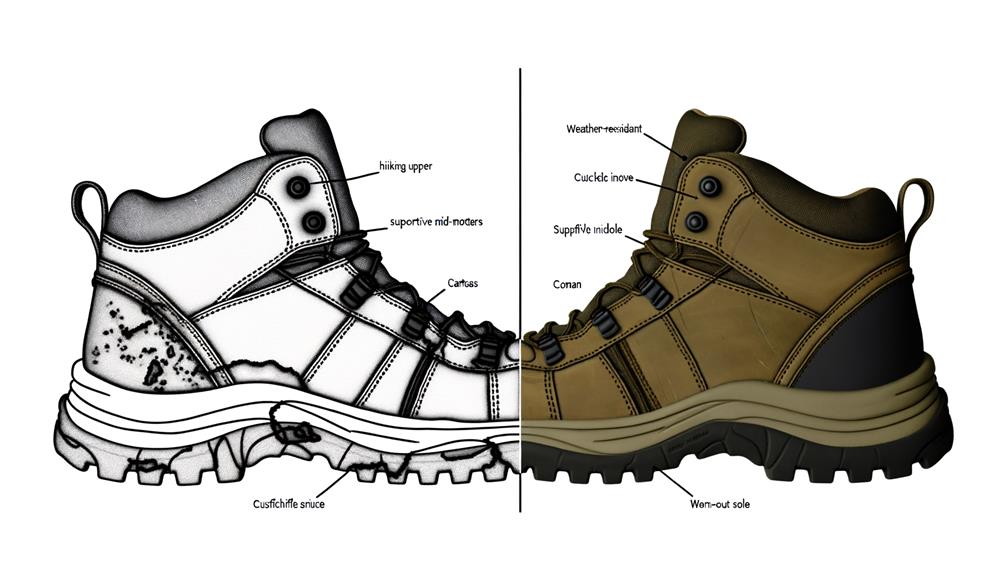
Moving beyond the realm of traction and grip, it becomes pertinent to evaluate the durability and materials used in the construction of hiking shoes compared to regular shoes.
One notable difference between hiking shoes and regular shoes lies in the durability. Hiking shoes are typically crafted from tear-resistant materials, offering elevated protection against harsh elements like rocks and thorns. Regular shoes, on the other hand, are usually not designed with such protective elements in mind, focusing more on casual or athletic use on smoother surfaces.
The materials used in hiking shoes differ significantly from those used in regular shoes. Hiking shoes often incorporate stiffer materials underfoot to prevent rolling and improve balance on uneven terrains. This feature is not common in regular shoes, which typically prioritize comfort in flat, predictable environments.
Importance of Ankle Support
Understanding the significance of ankle support in hiking footwear is pivotal, as it not only aids in maintaining balance on uneven terrain but also plays a crucial role in preventing injuries and providing stability during the hike. Hiking shoes are specifically designed to provide robust ankle protection, significantly reducing the risk of sprains and strains.
Hiking footwear utilizes stiffer materials underfoot to prevent rolling and enhance ankle support, a feature regularly absent in standard sneakers. However, research suggests high-cuff hiking boots may not provide significant ankle support and could increase the risk of ankle rolling.
| Importance of Ankle Support | Ankle Protection | Ankle Support |
|---|---|---|
| Prevents rolling of the foot | Reduces risk of sprains | Enhances balance on varied terrain |
| Provides stability during the hike | Stiffer materials underfoot | Crucial in preventing ankle injuries |
| Not necessarily a key deciding factor in footwear choice | High-cuff boots may not provide significant support | Excessive weight can cause ankle buckling |
The importance of ankle support cannot be overstated, especially when bearing excessive weight during hikes. Such weight could lead to ankle buckling, emphasizing the need for reliable ankle support. Therefore, considering the ankle support factor in your hiking footwear is essential to ensure a safe and enjoyable hiking experience.
Breathability and Water-Resistance Factors
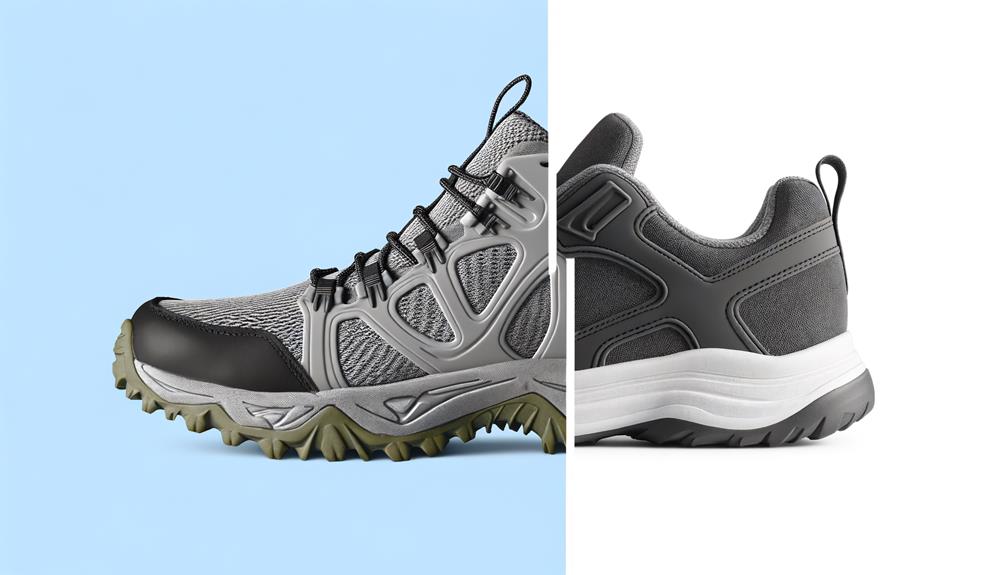
An essential consideration in choosing hiking footwear is assessing the breathability and water-resistance factors, as these attributes significantly influence the comfort and performance during a hike. Hiking shoes typically feature breathable uppers, a design element that allows moisture to escape, hence reducing the likelihood of sweaty feet. This is integral for maintaining healthy feet and enhancing overall hiking experience.
A waterproof membrane such as Gore-Tex is often incorporated into the design of hiking shoes. This feature offers a balance between breathability and water-resistance, effectively preventing water ingress while still allowing the foot to breathe. It's a delicate balance, as water-resistant shoes, while protective, can become heavy and waterlogged when fully wet.
In contrast, the breathable option, while susceptible to water ingress, facilitates faster drying, hence it is preferred by many hikers. This quick-drying attribute significantly reduces the risk of blisters, further enhancing the comfort and durability of hiking footwear.
However, it should be noted that the need for breathability and water-resistance in hiking shoes largely depends on the hiking conditions. For most conditions, a breathable option is favored for its quick-drying properties, but the waterproof option may be necessary for wetter environments.
Frequently Asked Questions
Can I Wear Normal Shoes for Hiking?
While normal shoes can be used for hiking, they may not withstand the terrain impact, potentially diminishing shoe durability and comfort level. Hiking shoes are specifically designed to handle rugged conditions and provide optimal support.
Are Hiking Shoes Good for Daily Walking?
Hiking shoes can certainly be used for daily walking. However, in terms of comfort comparison, they may feel stiffer. Durability assessment reveals they last longer, but tread differences might make them less ideal on pavement.
Is It OK to Wear Running Shoes for Hiking?
Running shoes may not provide adequate ankle support, terrain impact resistance, and traction necessary for hiking. These factors are critical for safety and comfort on varied terrain, making specific hiking shoes a preferred choice.
Why Are Hiking Shoes Better Than Sneakers?
Hiking shoes, superior to regular sneakers, offer waterproof features, robust ankle support, and excellent terrain grip. These attributes enhance comfort and safety during outdoor ventures, fostering a sense of belonging and connection with nature.
Conclusion
In conclusion, the contrast between hiking shoes and regular shoes is fundamentally anchored in their design and purpose.
Hiking shoes, with their aggressive tread, stiffer materials, and superior durability, are the stalwart champions of rugged terrains, offering invaluable protection and support.
Regular shoes, however, are the masters of flat surfaces, providing adequate performance in less challenging environments.
The choice between these footwear types hinges on one's requirements, thus underlining the critical role of understanding their distinct characteristics.

With years of extensive experience, I specialize in evaluating waterproof hiking shoe options across various brands. My goal is to offer valuable insights and recommendations, enhancing your hiking experience with tips and suggestions for a more adventurous and comfortable journey.

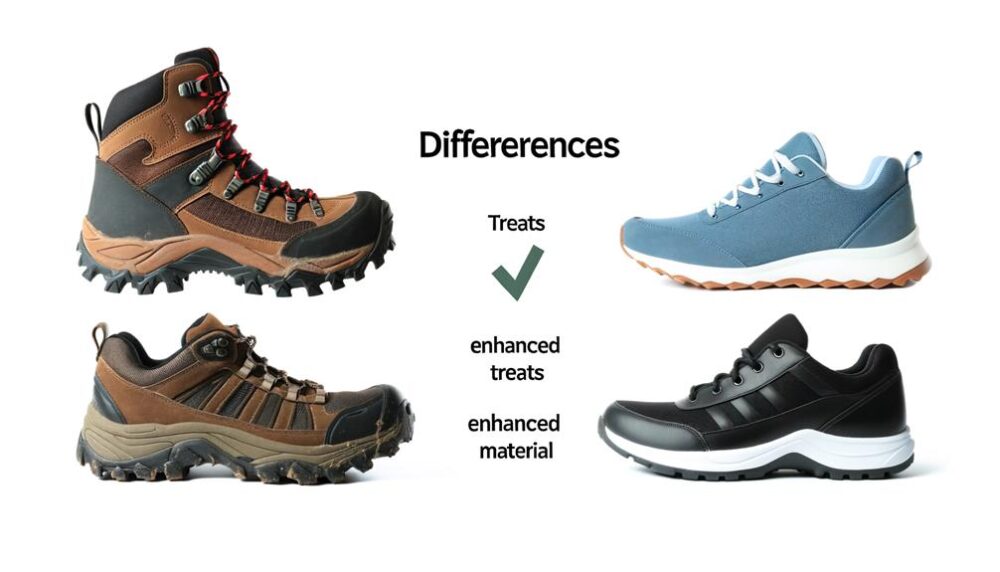
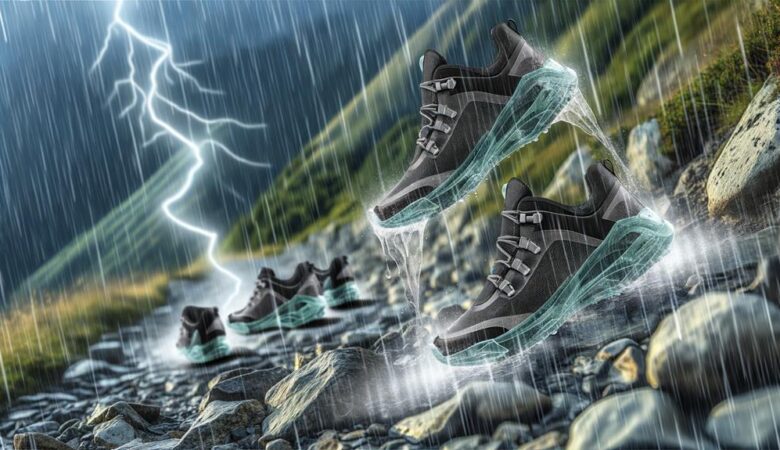
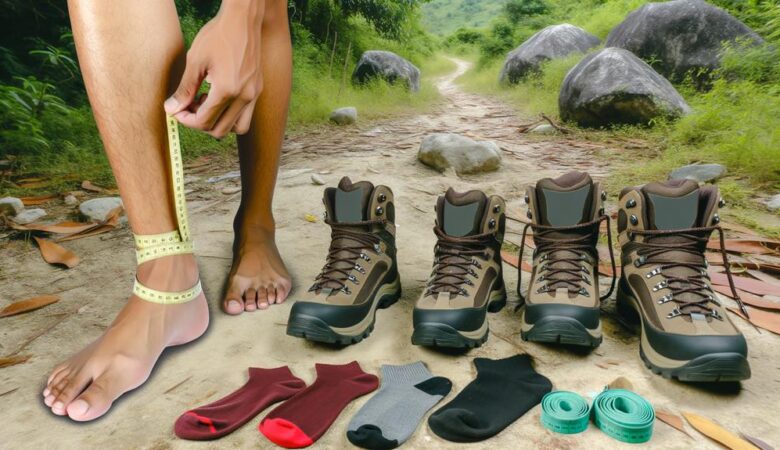
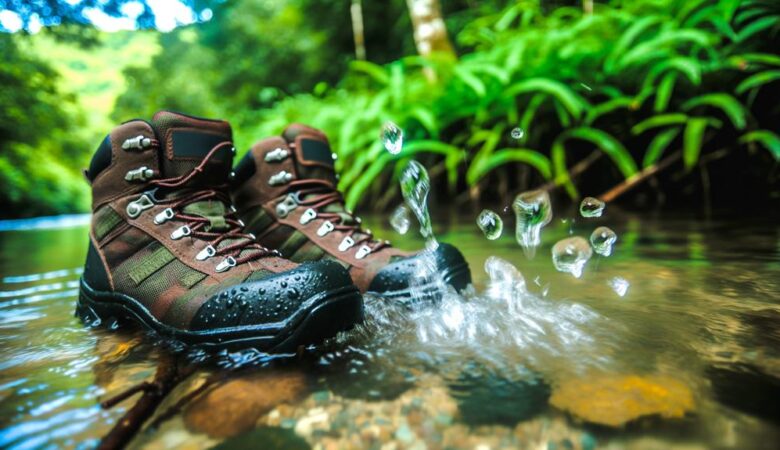
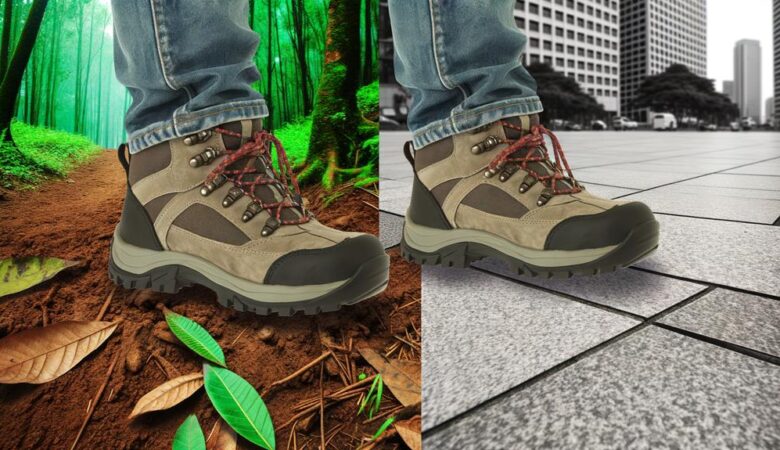
Leave a Reply